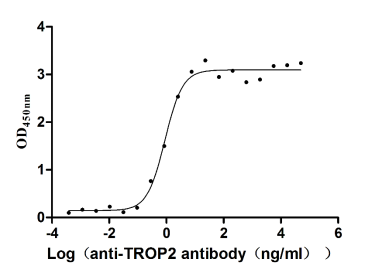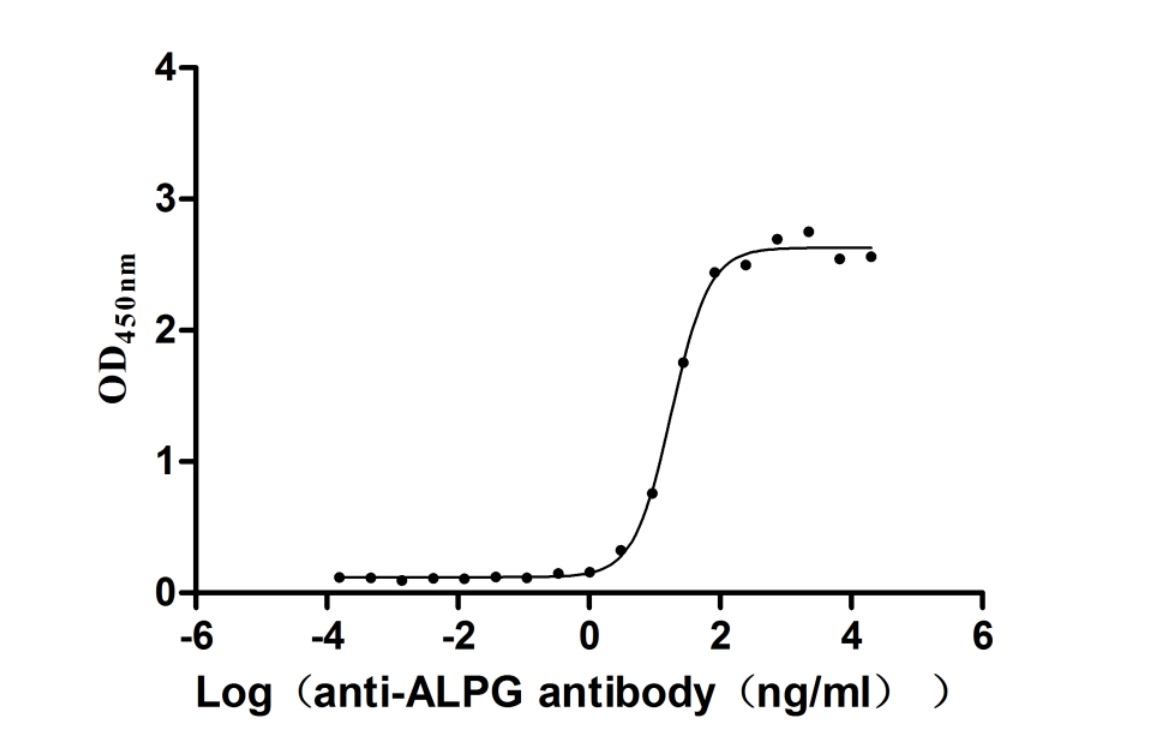Recombinant Heteroscodra maculata Delta-theraphotoxin-Hm1a
In Stock-
中文名稱:Recombinant Heteroscodra maculata Delta-theraphotoxin-Hm1a
-
貨號:CSB-EP351577HGU
-
規(guī)格:¥2328
-
圖片:
-
其他:
產(chǎn)品詳情
-
純度:Greater than 90% as determined by SDS-PAGE.
-
基因名:N/A
-
Uniprot No.:
-
別名:; Delta-theraphotoxin-Hm1a; Delta-TRTX-Hm1a; Heteroscodratoxin-1; HmTx1; Kappa-theraphotoxin-Hm1a; Kappa-TRTX-Hm1a
-
種屬:Heteroscodra maculata (Togo starburst tarantula) (Togo starburst baboon spider)
-
蛋白長度:Full Length
-
來源:E.coli
-
分子量:24.0kDa
-
表達(dá)區(qū)域:1-35aa
-
氨基酸序列ECRYLFGGCSSTSDCCKHLSCRSDWKYCAWDGTFS
Note: The complete sequence including tag sequence, target protein sequence and linker sequence could be provided upon request. -
蛋白標(biāo)簽:N-terminal 10xHis-SUMO-tagged and C-terminal Myc-tagged
-
產(chǎn)品提供形式:Liquid or Lyophilized powder
Note: We will preferentially ship the format that we have in stock, however, if you have any special requirement for the format, please remark your requirement when placing the order, we will prepare according to your demand. -
緩沖液:Tris-based buffer,50% glycerol
-
儲存條件:Store at -20°C/-80°C upon receipt, aliquoting is necessary for mutiple use. Avoid repeated freeze-thaw cycles.
-
保質(zhì)期:The shelf life is related to many factors, storage state, buffer ingredients, storage temperature and the stability of the protein itself.
Generally, the shelf life of liquid form is 6 months at -20°C/-80°C. The shelf life of lyophilized form is 12 months at -20°C/-80°C. -
貨期:3-7 business days
-
注意事項:Repeated freezing and thawing is not recommended. Store working aliquots at 4°C for up to one week.
-
Datasheet & COA:Please contact us to get it.
相關(guān)產(chǎn)品
靶點(diǎn)詳情
-
功能:Gating-modifier toxin that potently inhibits inactivation of the mammalian Nav1.1/SCN1A sodium channel (EC(50)=38 nM). Also moderately inhibits inactivation of Nav1.2/SCN2A (EC(50)=236 nM) and Nav1.3/SCN3A (EC(50)=220 nM) when the channels are expressed in oocytes without the beta-1 auxiliary subunit. Does not inhibit inactivation of Nav1.2/SCN2A when the channel is coexpressed with the beta-1 auxiliary subunit. When tested on Nav1.1/SCN1A channel, it enhances peak current amplitude and potently delays channel inactivation in a dose-dependent manner, leading to a large sustained current. It has no effect on the voltage-dependence of steady-state activation, and induces a depolarizing shift in the voltage dependence of inactivation. In addition, it does not modify the recovery from fast inactivation in Nav1.1/SCN1A. The binding affinity and subtype selectivity of the toxin towards Nav1.1/SCN1A channel is determined by residues within both the S1-S2 and S3-S4 loops of the domain IV voltage sensor of the channel. This toxin also weakly inhibits several subtypes of voltage-gated potassium channels. It moderately blocks Kv2.1/KCNB1 (23% inhibition at 100 nM), Kv2.2/KCNB2 (19.7% at 100 nM and 51% at 300 nM), Kv4.1/KCND1 (IC(50)=280 nM), Kv4.2/KCND2 (39% at 300 nM) and Kv4.3/KCND3 (43% at 300 nM). In vivo, intracerebroventricular injection into mice elicits convulsions, spasms, tremors and rapid death. When injected into mouse hindpaw, the toxin elicits an immediate and robust response to pain. However, intraplantar injection of toxin does not cause neurogenic inflammation or alter sensitivity to heat, indicative of a modality-specific effect on mechanosensitive neurons. In Dravet syndrome mice model, intracerebroventricular infusion of this peptide rescues mice from seizures and premature death.
-
亞細(xì)胞定位:Secreted.
-
蛋白家族:Huwentoxin-1 family, HaTx subfamily
-
組織特異性:Expressed by the venom gland.
Most popular with customers
-
Recombinant Human Claudin-9 (CLDN9)-VLPs (Active)
Express system: Mammalian cell
Species: Homo sapiens (Human)
-
Recombinant Human Desmoglein-3 (DSG3), partial (Active)
Express system: Baculovirus
Species: Homo sapiens (Human)
-
Recombinant Human C-C chemokine receptor type 8 (CCR8)-VLPs (Active)
Express system: Mammalian cell
Species: Homo sapiens (Human)
-
Recombinant Human Tumor-associated calcium signal transducer 2 (TACSTD2), partial (Active)
Express system: Mammalian cell
Species: Homo sapiens (Human)
-
Recombinant Human Alkaline phosphatase, germ cell type (ALPG) (Active)
Express system: Mammalian cell
Species: Homo sapiens (Human)
-
Recombinant Human Cadherin-17 (CDH17), partial (Active)
Express system: Mammalian cell
Species: Homo sapiens (Human)
-
Recombinant Human Serotransferrin(TF) (Active)
Express system: Mammalian cell
Species: Homo sapiens (Human)
-
Recombinant Human Tumor necrosis factor ligand superfamily member 15(TNFSF15) (Active)
Express system: Mammalian cell
Species: Homo sapiens (Human)










-AC1.jpg)










